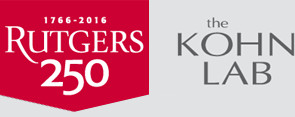 |
We investigated a library of tyrosine-based polycarbonates containing poly(ethylene glycol), PEG, as a controlled release matrix for the hydrophobic peptide voclosporin for the treatment of dry eye syndrome. Design criteria of the ocular insert are (1) sustained release of 5-10 μg/day, (2) 6-9 month for complete resorption of polymer matrix, (3) non-toxic and non-inflammatory host tissue reaction, and (4) stability to heat and radiation processing.
In vitro target release rates during 45 days and 50% mass loss in 32 weeks were obtained in select compositions. In vivo / in vitro correlation (IVIVC) values of 2-3 from drug release studies in rabbit indicated that these polymers may be a suitable polymer platform. Antioxidants were used to stabilize the drug-polymer formulation and were well tolerated in the sensitive eye of the rabbit.
(A) Tyrosine- based polycarbonate terpolymer carrier: 2 mm widw x 15 mm long x 0.5 mm thick, (B) Left eye with single implant (Ax2; identified by arrow) in dorsal conjunctival region 30 weeks after surgery (necroscopy image)
|
Project Leader: Carmine Iovine
Funding sources: Lux Biosciences Inc. and RESBIO – The National Resource for Polymeric Biomaterials (NIH grant EB001046).

